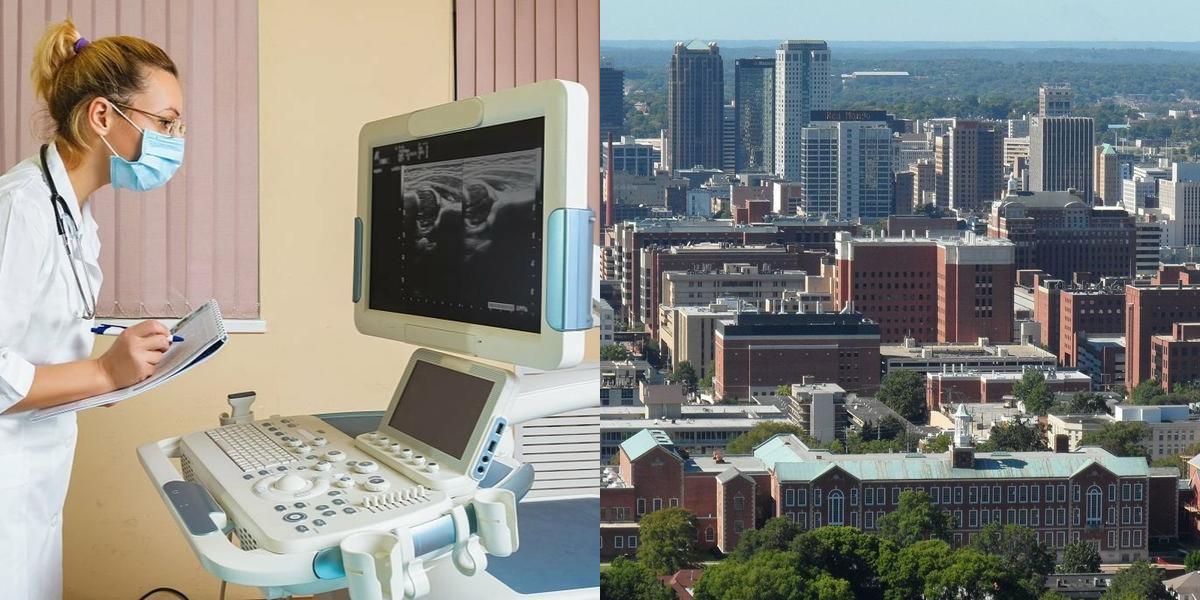How to Become a Medical Sonographer in Alabama

If you're interested in a stable healthcare career that doesn’t require medical school, becoming a Diagnostic Medical Sonographer in Alabama is a proven path. Sonographers use ultrasound imaging to help doctors diagnose and monitor conditions, from heart disease to high-risk pregnancies. This guide breaks down how to get started, where to study, how long it takes, what it costs, and what you can expect to earn.
As of May 2024, medical sonographers in Alabama earn an average salary of $66,820 per year, with projected national job growth of 11–15% through 2033 (BLS).
How to Get a Job as a Diagnostic Medical Sonographer
After earning your certification:
- Search job boards like My Next Move or Dreambound
- Highlight your certification and clinical training on your resume
- Network through professional groups like SDMS
- Prepare for interviews by reviewing technical and scenario-based questions
- Stay certified by completing continuing education
Career Paths and Opportunities after Becoming a Diagnostic Medical Sonographer
- Obstetric/Gynecologic Sonographer: Specializes in pregnancy and reproductive health imaging.
- Cardiac Sonographer (Echocardiography): Focus on heart-related ultrasound scans.
- Vascular Sonographer: Examine blood flow and identify circulatory issues.
- Sonography Instructor: Teach future sonographers in training programs.
- Sonography Equipment Sales/Research: Work with medical imaging technology companies.
Frequently Asked Questions
How much does a Medical Sonographer make in Alabama?
According to the Bureau of Labor Statistics (BLS), medical sonographers in Alabama earn an average annual salary of $74,070. The annual salary range for Alabama sonographers is $54,560 to $95,700.
How long does it take to become a sonographer in Alabama?
Most people complete their training in about 2 years. Accelerated programs may be available for those with healthcare experience.
What state pays medical sonographers the most?
California pays the highest, with an average salary of $122,670 (BLS, May 2024).
Do you need a license to be a sonographer in Alabama?
No state license is required, but most employers require ARDMS certification to work as a Diagnostic Medical Sonographer.
How much does ultrasound tech school cost in Alabama?
The cost of a sonography program varies by school and degree type:
- Community Colleges: $5,000–$15,000
- Universities: $10,000–$25,000
- Certificate Programs: $3,000–$12,000
Final Thoughts
A career in Diagnostic Medical Sonography offers strong earning potential, job stability, and numerous specialization opportunities in Alabama’s healthcare industry.
By completing a CAAHEP-accredited program, earning ARDMS certification, and gaining hands-on experience, you’ll be well-prepared for a successful career as a Diagnostic Medical Sonographer.
Ready to take the next step? Find the best sonography programs near you with Dreambound today!
If you're considering a career shift or curious about different professional paths, Dreambound has written many guides to help you in making informed decisions. Here are a few:

Athena is Co-founder and CEO of Dreambound.



